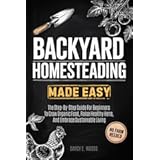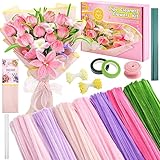Unlocking Creativity: A Deep Dive into DIY Stationery and School Supply Hacks
As you’ve just seen in the accompanying video, the dynamic world of **DIY stationery** and ingenious **school supply hacks** offers an unparalleled opportunity for personalization and efficiency. This realm transcends mere crafting; it represents a strategic approach to enhancing productivity, expressing individuality, and fostering sustainable practices. The visual demonstrations provide a fantastic starting point, showcasing how readily available materials can be transformed into functional and aesthetically pleasing items, but understanding the underlying principles elevates these projects from simple activities to impactful design choices.
Engaging with DIY projects for school supplies allows individuals to curate a workspace that genuinely reflects their personality and operational needs. This proactive engagement not only saves resources but also imbues everyday objects with a unique story and personal value. From a pedagogical standpoint, a well-organized and inspiring learning environment significantly contributes to focus and academic success, making these hacks more than just a creative pastime.
The Art of Personalization: Beyond Mere Aesthetics in Custom School Supplies
The inclination to personalize one’s belongings is deeply rooted in human psychology, serving as a powerful expression of identity. When applied to **custom school supplies**, this act of personalization transforms generic items into cherished tools, fostering a stronger connection to learning materials. Psychological studies often suggest that environments tailored to individual preferences can significantly boost engagement and intrinsic motivation, impacting academic performance positively.
Consider the profound difference between a mass-produced notebook and one embellished with a student’s chosen motifs, colors, or even an ergonomic modification. This bespoke approach extends beyond mere visual appeal; it influences the user’s interaction with the object. When students feel a sense of ownership and pride in their tools, their willingness to utilize them for study and organization naturally increases, creating a virtuous cycle of engagement.
Furthermore, the process of creating personalized items encourages a thoughtful consideration of design elements and functional requirements. It compels individuals to think about how different colors, textures, or structural alterations might enhance usability or evoke specific emotions. This intentional design thinking, even on a small scale, develops critical problem-solving skills and an appreciation for craftsmanship that extends into broader aspects of life.
Strategic Upcycling: Sustainable Stationery Solutions for a Greener Tomorrow
In an era increasingly focused on environmental stewardship, **upcycled stationery** represents a pivotal movement towards sustainable consumption. The practice of transforming discarded materials into valuable school supplies not only reduces waste but also promotes a resourceful mindset among students and educators alike. This approach directly combats the linear consumption model by giving new life to items that would otherwise end up in landfills, contributing to a circular economy.
Many household items, often overlooked, possess inherent qualities that make them ideal for conversion into functional stationery. Cardboard boxes can become robust desk organizers, old magazines can be decoupaged onto notebook covers for unique designs, and plastic bottles can be ingeniously repurposed into pen holders or supply caddies. These transformations often require minimal additional materials, further reducing the ecological footprint associated with production and disposal.
The educational benefits of upcycling are multifaceted, extending beyond environmental awareness. Students engaged in these projects learn about material properties, structural integrity, and the creative potential of everyday objects. This hands-on experience can deepen their understanding of design constraints and opportunities, fostering an innovative spirit essential for addressing future challenges. Moreover, the act of making something useful from “nothing” instills a profound sense of accomplishment and self-efficacy.
Ergonomics and Efficiency: Crafting a Productive Workspace with DIY Methods
Optimizing one’s study or work environment is paramount for sustained focus and productivity, a principle readily applicable to the design of **DIY stationery**. Ergonomic considerations, often associated with high-end office furniture, can be cleverly integrated into homemade school supplies to enhance comfort and reduce strain during prolonged use. For instance, a custom-sized pen grip fashioned from polymer clay can significantly improve writing comfort, mitigating the risk of hand fatigue.
Effective desk organization is another cornerstone of a productive workspace, and DIY solutions excel in providing tailored storage that perfectly fits individual needs and available space. Studies on workspace design indicate that a decluttered and logically arranged environment can reduce cognitive load, allowing for greater mental clarity and sustained attention. Fabricated drawer dividers, custom-fit paper trays, and tiered pen holders, all crafted from inexpensive materials, can dramatically improve systemization.
Consider the impact of a dedicated charging station for devices, meticulously crafted from a recycled box, or a personalized file sorter designed to hold specific coursework. These thoughtful additions, while seemingly minor, contribute significantly to an environment where everything has its place, minimizing distractions and maximizing efficiency. The iterative process of designing and refining these organizational tools also strengthens analytical and practical problem-solving skills.
Mastering Materials and Techniques for Durable DIY School Supplies
The success of any **DIY stationery project** hinges significantly on the judicious selection and application of materials and techniques. Understanding the properties of various adhesives, coatings, and structural components is crucial for creating items that are not only aesthetically pleasing but also durable and long-lasting. Expertise in material science ensures that custom creations withstand the rigors of daily use, offering genuine value.
For paper-based projects, incorporating archival-quality glues and sealants can prevent yellowing and degradation over time, preserving the vibrant aesthetic. When working with fabric, pre-treating materials for stiffness or water resistance can extend the life of a homemade pencil case or book cover. Moreover, techniques like decoupage, where layers of paper are sealed with varnish, transform ordinary surfaces into robust and decorative elements capable of enduring regular handling.
Advanced crafters might explore more sophisticated techniques such as resin casting for creating unique pen bodies or paperweights, or even simple bookbinding methods for constructing custom journals. These techniques, while requiring a steeper learning curve, yield professional-grade results that rival commercially produced items. The careful consideration of each material’s interaction and the precise execution of crafting steps are hallmarks of expert DIY practice, ensuring both structural integrity and refined finish.
Innovations in DIY: From Digital Design to Tangible Tools
The evolution of technology has dramatically expanded the horizons for **DIY stationery** and school supply innovation, blending digital precision with tactile creation. Modern tools and software allow for meticulous planning and design, transforming complex ideas into achievable projects. This convergence of digital and physical realms offers unprecedented opportunities for personalized and sophisticated crafting outcomes.
Digital design programs, from simple graphic editors to advanced CAD software, enable crafters to create custom templates for labels, planner inserts, or intricate stencils with unparalleled accuracy. These digital blueprints can then be printed and used as guides for cutting, painting, or assembly, ensuring consistent and professional results across multiple items. This approach reduces manual errors and allows for experimentation with complex patterns and precise measurements.
Furthermore, access to desktop cutting machines, whether laser cutters for precision wood or acrylic, or vinyl cutters for detailed stickers, has revolutionized what is possible for home crafters. These machines empower individuals to produce bespoke components that would be impossible to create by hand, such as custom dividers for binders or intricately cut organizers. Integrating these technological advancements into DIY projects elevates the quality and complexity of **school supply hacks**, pushing the boundaries of traditional crafting.
The Economic Case for DIY: Smart Savings and Skill Development
Beyond the creative and environmental advantages, the economic benefits of engaging in **DIY stationery** projects are substantial, providing a prudent alternative to often expensive retail options. The initial outlay for basic crafting supplies is typically minimal, especially when leveraging existing household items, leading to considerable savings over time. This budget-friendly approach is particularly appealing for students and families looking to optimize their expenditures.
The market for specialized stationery and school supplies can be remarkably costly, with unique or branded items commanding premium prices. By adopting a DIY mindset, individuals can replicate or even improve upon these items at a fraction of the cost, often using materials that are readily available or repurposed. This economic efficiency does not compromise quality; rather, it encourages resourceful thinking and a deeper appreciation for material value.
Moreover, the process of creating these items fosters a valuable set of transferable skills, including project management, resource allocation, and hands-on craftsmanship. These competencies extend far beyond the crafting table, proving beneficial in academic pursuits, future careers, and daily problem-solving. Embracing **school supply hacks** is not merely about saving money; it is an investment in personal development and practical capability.







